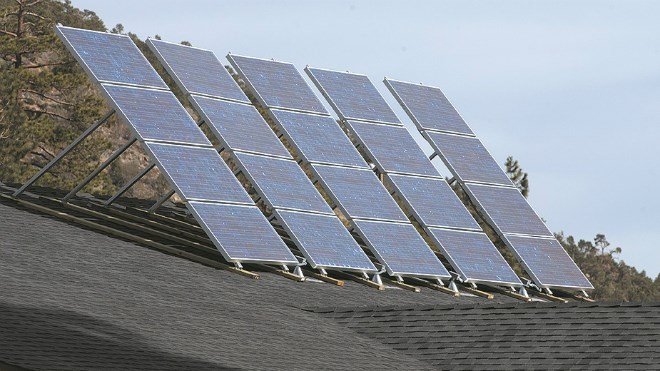New rules governing Ontario's clean energy program are aimed at correcting the “weaknesses” in the province's current strategy, says Energy Minister Bob Chiarelli.
The new rules give municipalities far more say in approving projects under Ontario's Feed-in Tariff (FIT) program, which encourages large and small operators to build solar and wind projects, and then sell the energy to the province.
The FIT program has made progress in its goal of reducing Ontario's dependance on non-renewable energy. For example, the province's reliance on coal power has dipped to three per cent in 2013, compared to 25 per cent in 2003. According to government statistics, that's the equivalent of taking seven million cars off the road.
But critics have attacked the program as too expensive and municipalities have long complained about their almost total lack of control over where projects are located. For example, it has led to unsightly solar panels in people's front yards, upsetting neighbours who complain to city officials who are powerless to do anything.
Chiarelli acknowledged mistakes were made.
“We've had some major concerns and weaknesses in how we site the energy projects,” he said.
“Since I've been appointed, we've worked very hard at coming up with solutions, we've consulted with the municipal sector, (the Association of Municipalities of Ontario), with mayors, other people in this sector, environmental groups, and we've put forward a solution that we believe will solve the problem.”
Under the new rules, developers must work with municipalities when determining where the solar or wind project will be built, and cities can set out site requirements developers will have to follow. Priority will be given to projects in which cities are either partners or are taking a lead role.
So far, Chiarelli says municipalities have been enthusiastic about the new policy.
“We have received extremely positive feedback from the renewable energy stakeholders on this initiative,” he said.“They're very supportive of it.”
The rules eliminate potential conflicts, he said, and set the stage for a collaborative process that meets the province's energy targets while address municipal concerns.
Ward 11 Coun. Terry Kett, a vocal critic of the old FIT rules, said he is impressed with the approach new Liberal Premier Kathleen Wynne is taking with municipalities.
“They're re-doing their procurement process, which is just what we wanted,” Kett said. “The key for me, really, is locations. They're going to be consulting cities on location and also on site agreements.
“So, what could be better? We want to be able to OK the location, and we want to make sure the site plan agreements are acceptable to neighbourhoods. I'm really pleased with that.”
Chiarelli said his ministry will be consulting with all areas of Ontario this year on developing a long-term energy plan for the province. There's also funding available for regions to develop their own energy plans.
“The long-term energy plan review is going to have hearings and consultations in six or seven regions across the province,” Chiarelli said. “There will also be as much web consultation as possible.”
Kett said that having a local energy plan would have been a huge help last fall when the city was asked to support several solar projects that were lining up to meet a December deadline set by the province for funding. Under the old rules, projects with municipal support had a better chance of being approved.
At the time, Kett complained municipalities were being asked to support projects they had no control over, but were being forced to live with. A long-term energy plan could act as a guide to determine what the city wants to do with similar projects in the future, Kett said.
“When all those projects came to us last year, we were just floored with all of them and we weren't prepared to act,” he said.
“So I think what we need to do here in the city is develop a proper energy plan and put some good options in there.
“We need to develop a proper energy plan and see where we're going in, not only developing our own energy, but in terms of processing projects that come to us.”
Join Sudbury.com+
- Messages
- Post a Listing
- Your Listings
- Your Profile
- Your Subscriptions
- Your Likes
- Your Business
- Support Local News
- Payment History
Sudbury.com+ members
Already a +member?
Not a +member?
Sign up for a Sudbury.com+ account for instant access to upcoming contests, local offers, auctions and so much more.
